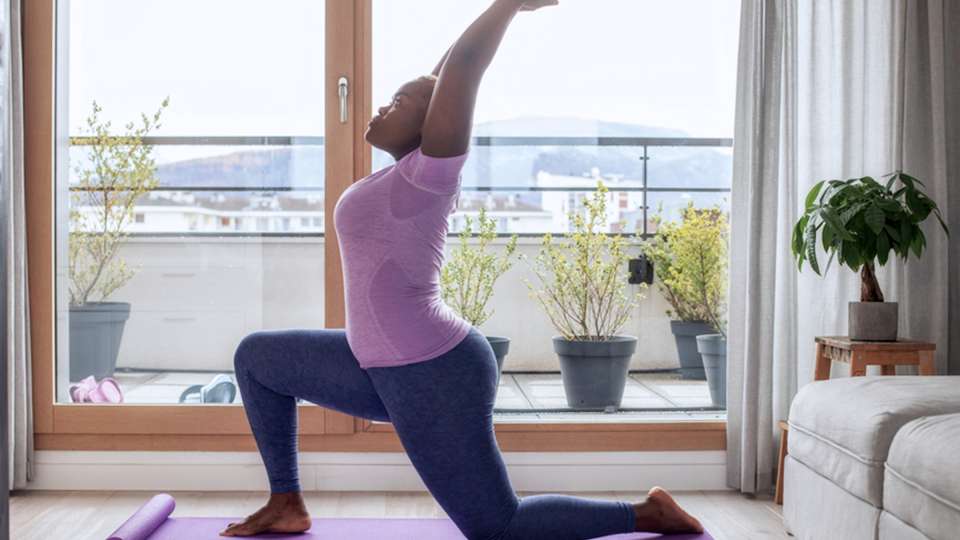
Whether you’ve been away from exercise for a season or a decade, it can be intimidating to get back into the swing of things.
If you’re reading this article, you might have the desire (or at least the curiosity) to add more movement to your life — and these three tips will help you do so in a way that feels attainable, effective and even enjoyable.
Determine what kind of exercise you like — and plan accordingly
You are much more likely to start and stick with a new exercise routine if you choose something that sounds fun.
“You want to take stock of what you think is going to keep you interested. The best exercise is whatever you are going to keep doing,” says Dr. Joesph Ihm, a physician at the Spine Center and the Sports Medicine Center at Harborview.
If you loved your old routine and want to go back to those activities, that’s awesome. If you want to mix things up, that’s great too. The idea is to choose something you’re going to look forward to rather than dread — meaning follow your own exercise interests rather than what might be trendy.
Questions to ask yourself:
- Are there specific activities you’re interested in?
- What about activities you want to avoid?
- Do you like to exercise solo or with a group?
- Do you like having a coach or trainer?
- What time of day do you like to exercise?
- Do you have or want to use equipment?
- What is feasible with your budget and schedule?
Once you have a sense of what you like and dislike, as well as what works with your schedule and resources, choose a fitness routine that matches.
Love group classes and exercising before work? Check out morning yoga at a nearby studio. Trying to squeeze in some movement around a busy schedule? At-home bodyweight exercises between daily to-dos might work well for you.
Consider your motivations and remove barriers
Understanding your personal motivations helps you create a plan based on what you want.
If your goal is to bolster and maintain health, the U.S. National Physical Activity Guidelines recommend 150 minutes of moderate exercise per week (moderate meaning you have enough breath to complete the exercise while talking but not while singing). This exercise doesn’t have to happen all at once, and instead can be broken up into small, doable chunks.
If you are wanting to achieve specific abilities — say, be able to walk or jog with friends around Green Lake or go enjoy a game of pickle ball — you’ll want to gear your plan to practice and incrementally build those skills, whether it’s flexibility, strength, cardio or something else.
When you feel resistance to the new routine, try to remind yourself of your original goals. It can help to connect back to your initial motivation in those moments that feel like a slog.
On the flip side, thinking about what might be stopping you from exercising helps because then you can get creative to address and remove those barriers. Being honest and realistic about what you won’t do (say, drive in post-work traffic to the gym) or what has stopped you from exercising in the past (overstuffed schedule, child care, etc.) can help inform your new routine.
Questions to ask yourself:
- Why do I want to start exercising again?
- What fitness abilities, activities or achievements would bring me joy?
- What fitness abilities, activities and achievements do I not care about?
- What has stopped me from exercising in the past?
- What physical or logistical constraints do I have?
Restarting a fitness routine doesn’t need to look any particular way. This is about what you want and what is accessible and attainable.
So, choose the fanciest, hours-long trainer-led workouts in a studio if you desire, or cobble together little moments of movement throughout the day, like dancing in your kitchen while your coffee brews or doing core exercises at your desk. It’s about what works for you.
Set small, clear goals and ease your way in
Once you have the why behind your fitness routine, you want to start with small goals — as in, smaller than you think.
“You want to be careful to not set your expectations too high. Set your initial goals below your lofty goals so they are easier to achieve,” Ihm says.
The idea is to avoid getting discouraged and instead build confidence as you achieve these mini-goals and work your way up to the larger, more challenging ones.
Starting small and easing your way in also helps you avoid excessive soreness and injury. Pay attention to how your body feels after you exercise: As you build strength, you can increase the frequency and duration of your workouts.
Examples of small goals to get you started:
- Fitness snack with five- or 10-minute exercises throughout the day.
- Try 30 minutes of moderate exercise with a day or two off in between.
- Break down your big goal into mini, achievable activities. (Instead of running five miles or five days a week, start with a mile a couple times a week and work up.)
Remember, any bit of exercise and movement you add counts, no matter how small.
“I want people to not feel threatened about starting to be active. You don’t have to deadlift 300 pounds or sprint as fast as you can to benefit from regular exercise. You can start with a whole host of accessible activities and still get the health benefits,” Ihm says.

 Healthy ideas for your inbox
Healthy ideas for your inbox





